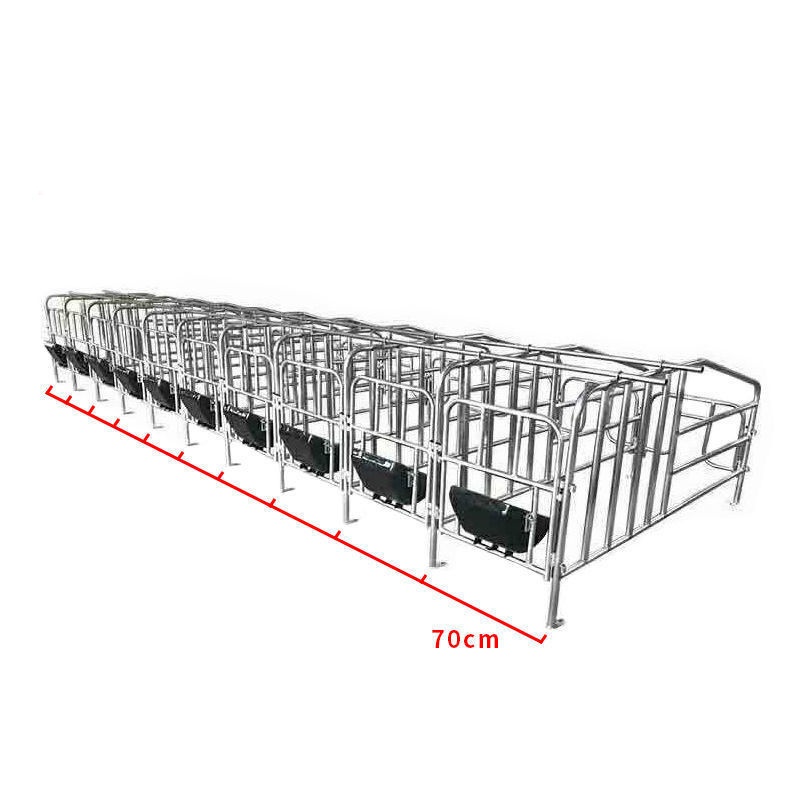laboratory rabbit cages
Nov . 14, 2024 22:21 Back to list
laboratory rabbit cages
Laboratory Rabbit Cages Importance and Design Considerations
Laboratory rabbit cages play a crucial role in the field of biomedical research, where rabbits are often used due to their unique physiological and anatomical characteristics. These animals are integral to various studies, including pharmacological research, toxicology testing, and genetic studies. The design and management of laboratory rabbit cages are essential for ensuring the welfare of the animals and the integrity of research outcomes.
One of the most critical factors in the design of laboratory rabbit cages is the provision of sufficient space. Rabbits are naturally active animals that require room to move, exercise, and engage in natural behaviors. It is vital that cages provide enough floor area, vertical space, and climbing opportunities to promote physical health and psychological well-being. Guidelines generally recommend a minimum floor area of 0.5 square meters for a single rabbit, with additional space for any companions.
Ventilation and temperature control are also paramount. Rabbits are sensitive to extreme temperatures, and inadequate ventilation can lead to respiratory issues and stress. Proper airflow helps dissipate heat and ensures a constant supply of fresh air, which is critical for maintaining the health of the rabbits. The ideal temperature range for laboratory rabbits is typically between 18°C and 24°C (64°F to 75°F), and humidity levels should be kept between 30% and 70%.
laboratory rabbit cages

The materials used in constructing rabbit cages are also worth considering. Cages should be made from non-toxic, durable materials that can withstand cleaning and disinfection. Wire mesh, plastic, and metal are common choices, but they should be designed to prevent injury to the rabbits. The cage design should prevent escape while allowing easy access for handlers.
Enrichment is another vital aspect of housing laboratory rabbits. These animals thrive in environments that stimulate their natural behaviors. Providing toys, tunnels, and hiding spots can help reduce stress and encourage exploratory behavior. Additionally, rabbits should have access to nesting materials to fulfill their instincts for burrowing and creating safe resting spaces.
Feeding and watering systems also need to be thoughtfully designed. Rabbits require a balanced diet rich in fiber, primarily from hay, along with pellets and fresh vegetables. Automatic feeders and water systems can help ensure a consistent supply while minimizing waste. Regular monitoring of food and water intake is essential for detecting health issues early.
In conclusion, laboratory rabbit cages are more than mere containment systems; they are pivotal in ensuring the welfare of the rabbits and the reliability of research outcomes. Through careful design that considers space, ventilation, materials, enrichment, and feeding systems, researchers can create environments that support the health and well-being of laboratory rabbits. By prioritizing these factors, the scientific community can uphold ethical standards and enhance the quality of data derived from rabbit studies.
-
Hot Sale 24 & 18 Door Rabbit Cages - Premium Breeding Solutions
NewsJul.25,2025
-
Automatic Feeding Line System Pan Feeder Nipple Drinker - Anping County Yize Metal Products Co., Ltd.
NewsJul.21,2025
-
Automatic Feeding Line System Pan Feeder Nipple Drinker - Anping County Yize Metal Products Co., Ltd.
NewsJul.21,2025
-
Automatic Feeding Line System - Anping Yize | Precision & Nipple
NewsJul.21,2025
-
Automatic Feeding Line System - Anping Yize | Precision & Nipple
NewsJul.21,2025
-
Automatic Feeding Line System-Anping County Yize Metal Products Co., Ltd.|Efficient Feed Distribution&Customized Animal Farming Solutions
NewsJul.21,2025






